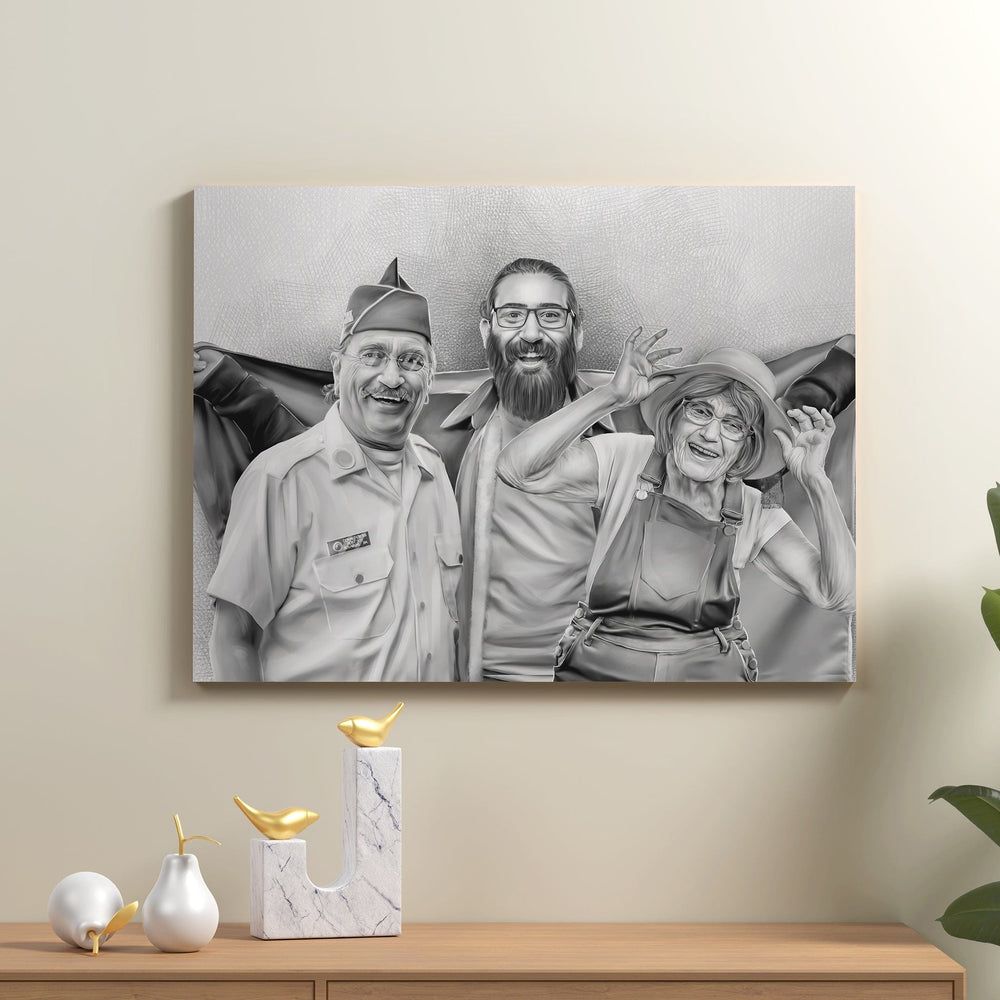The simplest and most fundamental type of art is Line Art. Many of us possess the essential skills to use lines to create art. Lines are transformed into art through creativity and practice.
Line Art is typically created on backgrounds of solid colors so that the design itself may stand out more clearly. Learn a few line art tips that will take your painting to a whole new level.
Definition of Line Art
Line art is the process of making a drawing with simple strokes of different weights and angles that show shape and depth. It doesn't have shading or gradients. Instead, it just has lines. Line drawings can also have straight or curved lines, thick or thin lines, and lines that are light and sketchy or thick and deliberate.
Importance of Line Art in the Art World
Consider painting, sculpting, or designing without using lines to divide the paper or canvas into shapes and patterns. A line is important in the creation process since it conveys an idea or expresses feelings. Without line, it is impossible to distinguish shapes, indicate texture, or enhance depth with tone.
Essential Tools and Materials
Line Art Pens
You can find pens in many different colors and styles, so you can find the ones that work best for your project. The more pressure you put on the brush, the more ink you get on the page and the thicker your lines.
Sketchbook
A sketchbook is an indispensable part of each artist's kit. Imagination flourishes here. Your attempts with new materials, explorations of old techniques, color schemes, drawing patterns, and other creative activities can all find a spot on these blank pages.
Erasers
Erasers are not only for corrections but can also be useful for producing marks. Each eraser leaves a different mark and should be used as needed depending on the medium.
Ruler
A ruler is useful for any artist whose work requires precise measurements. Drawing straight lines and precise forms are simplified with the use of a ruler.
Basic Line Art Techniques
Blind Contour Drawing
Choose an object or scene to sketch without glancing at your piece of paper. This exercise aims to integrate your eyes, brain, and hand; don't bother about attempting to make it realistic or accurate.
Continuous Line Drawing
A continuous line drawing is created without removing the drawing tool from the page. Complete a continuous line drawing with an ink pen, adjusting the line weight as necessary to represent perspective and areas of light and shadow, to resist the urge to erase lines.
Cross-Contour Drawing
Cross-contour drawings frequently adhere to the principles of perspective, with lines drawn farther apart in the foreground and closer together in the distance. In this kind of drawing, only lines are used to imply three-dimensional volume.
Line Art Drawing Tips
Vary the Weight of your Lines
You can change the brush weight by pressing harder or softer on your paper or digital tablet. Try out different line weights.
Trace and then Tidy Up
It's not necessary to draw precise lines in a single motion. After drawing the same line several times, you can clean it up with the eraser tool. If you believe your initial sketch is decent, you can copy it and use the same technique to clean it up in your line drawings.
Rotate the Canvas
To sketch easier with pen and paper, you naturally rotate the paper. Try moving the canvas to draw a complex stroke.
Common Mistakes and How to Avoid Them
Too Much Pressure on Your Pencil
Use pencils gently. Pushing too hard destroys paper texture. Your drawing will show this. Light pressure preserves paper texture. Less pressure and more time developing values will give you more control over your drawing.
Changing Mediums Constantly
You can experiment to find what you like, but remember that every tool needs to be learned. Your hand is typically untrained if you can't draw a line. It won't be trained till you work with one medium.
Using the Wrong Paper
Drawing issues may be paper-related. Cheap printer paper makes drawing difficult. Paper thickness matters, and smooth papers don't produce deep values either.
Failing Practice
Practice for only a single day is ineffective. To learn and master the process, it is necessary to do it constantly.
Final Thoughts
When drawing, most individuals typically employ lines incorrectly. They lose interest and give up without grasping the distinctions of line, whether explicit, implicit or otherwise. You can start to learn how to use a line by realizing its significance in your art. You start to gain mastery of it by practicing with various media and knowing how you use those tools.
Line art may be used to create a stunning background for any portrait, transforming a simple drawing into a finished piece you'll be proud to hang in your home. Visit Memorialized Art, and our skilled professionals will make it happen for you.














